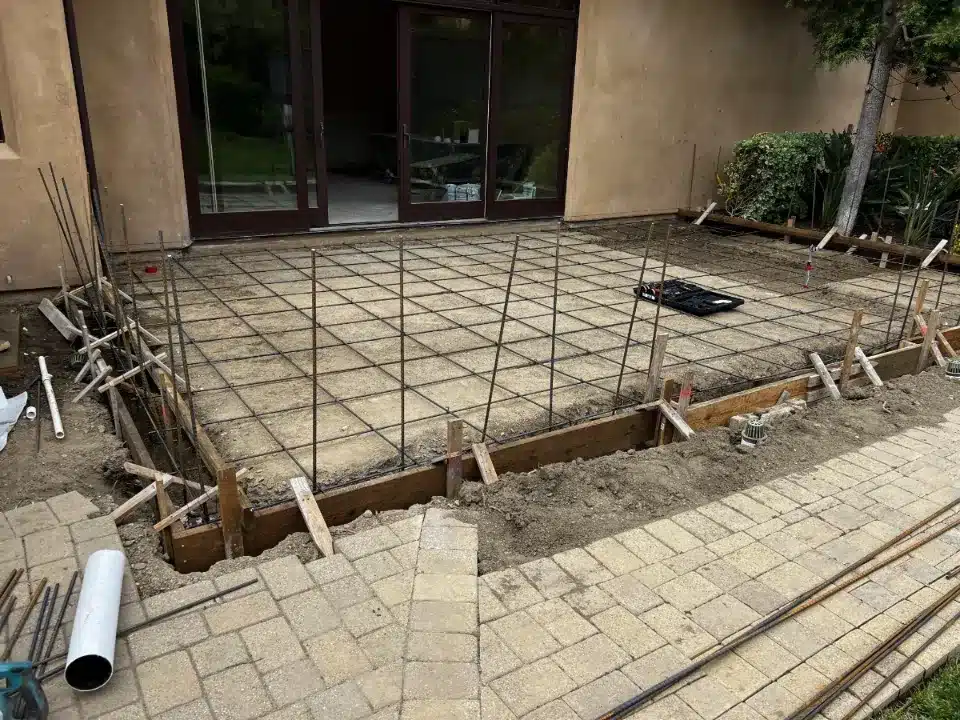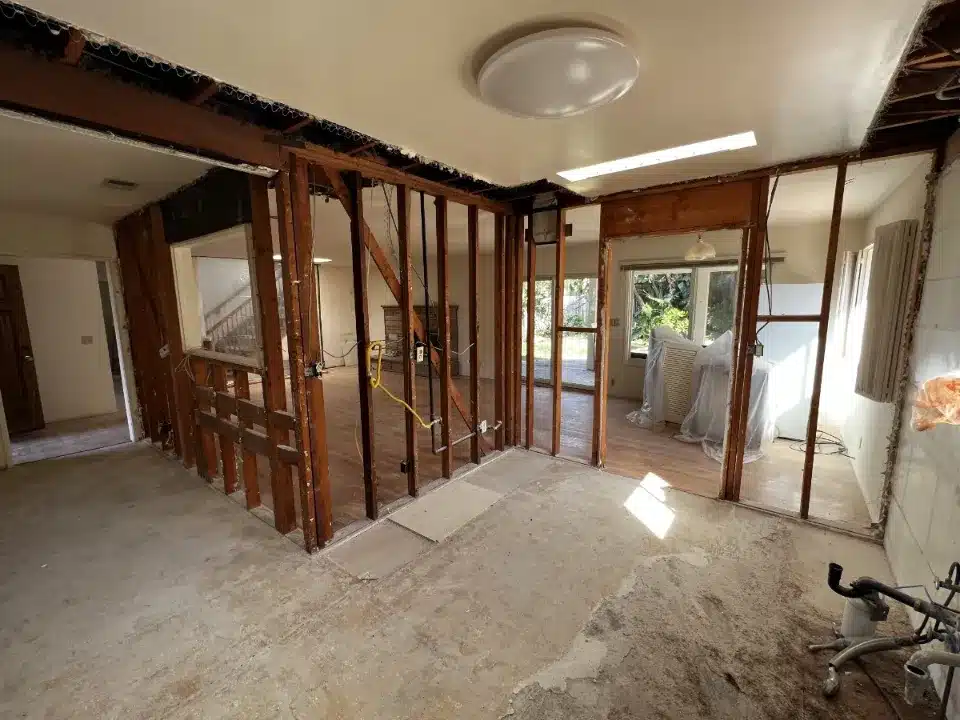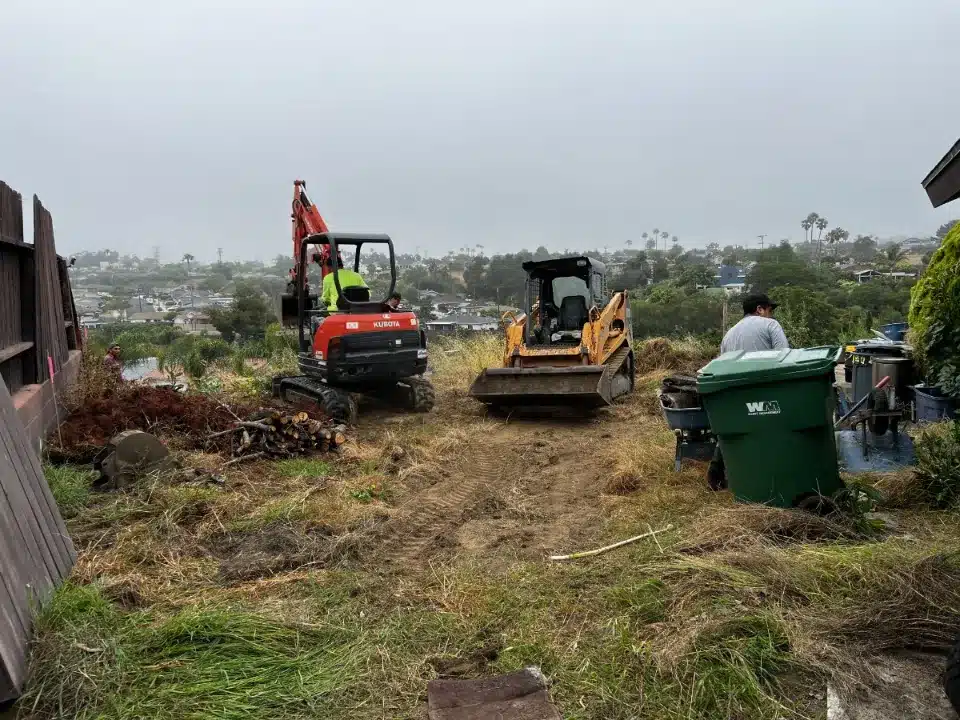As a homeowner in California, you might want to expand your family, add another space for friends to stay, or generate some extra income. The solution to all these needs lies in building an additional dwelling unit (ADU)! You may wonder, “Can I build an accessory dwelling unit (ADU) on my property?” The answer varies! Each city, jurisdiction, and sometimes even neighborhoods in California, have different types of ADU laws, so it’s essential not only to rely on our advice but also to review state law when possible.
However, California’s ADU laws generally allow property owners to add an ADU to their primary dwelling with minimal hassle, as long as they meet certain regulations.
The size and type of ADU—whether a garage conversion, attached ADU, or new construction—depend on your lot size and local zoning laws. For example, you can typically build one detached ADU or a junior accessory dwelling unit (JADU) on a residential lot, but larger projects (around one-third the size of your house or more) may require additional approval from the local government or state.

Planning Extras
When planning to build an accessory dwelling unit, it’s essential to consult the local building department for the building permit application process. Additionally, an ADU must comply with setbacks from the property line and adhere to specific ADU design guidelines, this doesn’t mean you have to limit your design creativity and go with some wild ideas, though! Understanding the cost to build an ADU is crucial too, as it can significantly impact your property value, and therefore you may need to contact the local authorities to reclassify your house and its value.
Whether you opt for a new ADU or a garage conversion, ensuring compliance with California ADU regulations will facilitate a smoother development process, and what will make it an even more smooth process is opting for a local contractor to help with all these legal processes in detail.
What is an ADU and How Does it Work?
Now that we’ve skimmed over the basics of how to build an ADU, you may be asking, what IS an ADU? For simple terms, an ADU is an Accessory Dwelling Unit, a secondary housing unit on a single-family residential lot, these ADUs can be attached to the main home, like a basement apartment, or detached, like a backyard cottage.
They offer flexible living spaces, whether for family members, guests, or as a rental unit. ADUs are a popular solution for increasing housing options without altering the character of a neighborhood. They work by utilizing existing property, making them a cost-effective and efficient way to add more living space.
Detached ADU vs. Attached ADU
ADUs typically come in two forms: detached and attached, with each one having different laws and building standards applicable to it, so plan ahead before you begin constructing which one you want!
The way they usually work when attached is by connecting your existing pipelines, electricity and fiber to the newly built one, making this new construction the go-to for those looking for an easy, cost-effective solution to increase their main dwelling.
On the other hand, detached ADUs can take slightly more work, as they need more ground-up work, such as building new infrastructure, pipelines, and more to make sure they are OSHA compliant and other regulatory bodies, as well as liveable on their own without the need of extra peripherals (such as an air conditioning unit) , these disadvantages bring in two large advantages though:
1. Privacy: A detached primary dwelling unit can give the person within complete privacy on the space on your property and make a great way for housing family members, guests, or tenants without compromising on personal space.
2. Renting opportunity: the ADU costs you acquired will be easily turned into a profit by letting in tenants onto your property and making them pay rent. Compared to an attached ADU, a detached ADU is usually worth much more in the renting market due to the given privacy mentioned above, making it a viable choice for those looking to make extra cash fast.
ADU Construction Laws in California
In California, homeowners looking to build an ADU must understand the crucial ADU development laws. California state law typically allows one ADU and, in some cases, a junior ADU on your property. Regulations may permit additional units if your property already has a multi-family structure.
Specific building code requirements dictate the size of your ADU, limiting the accessory structure’s size. In certain areas, you may even qualify for a pre-approved ADU design, simplifying the construction process.
When considering the cost of an ADU, factor in construction, permits, and any potential upgrades needed to comply with building and safety regulations. However, each city has different laws, so let’s break down the specific ADU laws for each city.
Los Angeles ADU Plan Laws
Detached ADUs in Los Angeles can be up to 1,200 square feet, while attached ADUs can be up to 50% of the primary residence’s floor area or 1,200 square feet, whichever is smaller. Both require at least four feet of setback from property lines. No additional parking is required if within half a mile of public transit.
San Francisco ADU Project Laws
Unattached dwelling units in San Francisco must meet a maximum size of 1,000 square feet or 1/3 the size of the primary residence, whichever is less. Attached ADUs can be up to 800 square feet or 1/3rd the existing living space. No parking is required, but specific neighborhood controls and design guidelines apply.
San Diego ADU Project Laws
Unattached additional dwelling units in San Diego can be up to 1,200 square feet. Attached ADUs are limited to 50% of the primary residence’s square footage. Both types have a minimum setback of four feet from property lines. No additional parking is needed if near public transit, and the city offers incentives for affordable ADUs.
Take all of these local laws into consideration when building adus, as not following these may prevent you from building your prefab adu or custom one too.

Conclusion: Build An ADU Today! (With The Right Building Permits)
Building an ADU in California is an exciting prospect, but understanding the complex web of regulations requires careful attention. Whether you’re dreaming of a cozy backyard cottage or a sleek garage conversion, you need to familiarize yourself with your local zoning laws and building codes.
Reach out to your local building contractors early in the process to ensure that your ADU dreams become a reality without any hitches. Remember, California’s ADU laws encourage the creation of more housing options, so with proper planning and adherence to regulations, you will successfully add value and versatility to your property.

